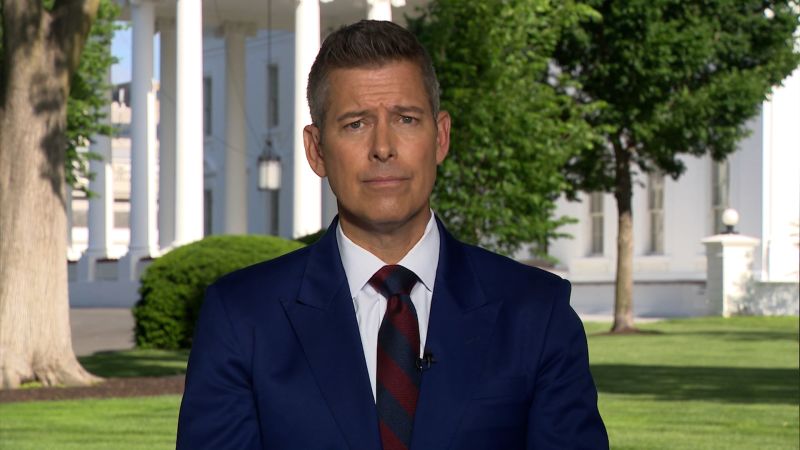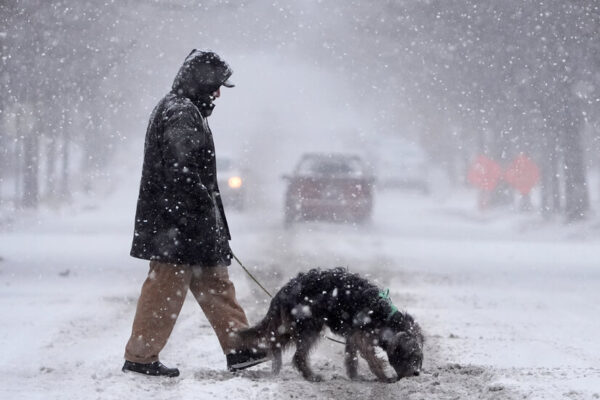The U.S. transportation system is the backbone of the nation, moving millions of people and goods daily across roads, skies, and rails. In 2025, U.S. Transportation Secretary Sean P. Duffy has made a bold declaration: “Our system is safe.” But what does that mean in a world of complex infrastructure, emerging technologies, and persistent safety challenges? This article dives into the current state of transportation safety, Duffy’s initiatives, and what they mean for everyday Americans.
The Role of the Transportation Secretary
The Transportation Secretary oversees the U.S. Department of Transportation (DOT), a sprawling agency responsible for ensuring the safety and efficiency of roads, railways, airways, and transit systems. Under Duffy’s leadership, the DOT has prioritized safety as its top mission, addressing everything from highway fatalities to aviation incidents.
Why Safety Matters
Every year, thousands of lives are lost in transportation-related incidents. In 2023 alone, over 40,000 people died on U.S. roads, with non-freeway arterial roads accounting for more than half of these fatalities. Safety isn’t just a statistic—it’s personal. I remember a close friend who narrowly escaped a highway crash caused by a distracted driver. It’s a stark reminder that behind every number is a family, a community, and a story.
Sean Duffy’s Safety-First Agenda
Since taking office, Sean Duffy has launched several initiatives to bolster transportation safety. His approach combines data-driven strategies, regulatory enforcement, and innovative technologies to reduce risks across all modes of transport.
The SAFE ROADS Initiative
In July 2025, Duffy introduced the Safe Arterials for Everyone through Reliable Operations and Distraction-Reducing Strategies (SAFE ROADS) initiative, targeting non-freeway arterial roads where most pedestrian fatalities occur. Governors were given 60 days to identify high-risk road segments and propose safety improvements.
- Focus Areas: Intersections, crosswalks, and arterial roads.
- Key Actions: Remove distractions like political signage and artwork from roadways to enhance driver focus.
- Impact: Aims to reduce the 65% of non-freeway arterial fatalities involving pedestrians.
This initiative resonates with me because I’ve seen how cluttered road signs can confuse drivers in my hometown. A clear road is a safer road, and Duffy’s push to simplify environments is a practical step forward.
Addressing Aviation Safety Concerns
Following a series of high-profile plane crashes in early 2025, including a deadly midair collision near Washington, D.C., Duffy has faced scrutiny over aviation safety. In a CBS News interview, he reassured the public, stating, “If you get in a plane, it’s a safe space.” He emphasized that each incident is unique, offering opportunities to refine systems.
- Modernization Efforts: Duffy is collaborating with SpaceX to update outdated air traffic control systems, some of which still rely on floppy disks.
- Workforce Stability: Despite layoffs at the Federal Aviation Administration (FAA), Duffy insists critical safety roles like air traffic controllers remain intact.
As someone who flies frequently, I find Duffy’s optimism reassuring but tempered. The idea of modernizing air traffic control is exciting—who wouldn’t want a system that doesn’t rely on 1990s tech? But the recent layoffs raise questions about long-term stability.
Strengthening Transit Safety
The Federal Transit Administration (FTA) has taken a hard stance on safety lapses, particularly with New York City’s Metropolitan Transportation Authority (MTA). After a worker’s death in 2023 and subsequent near-miss incidents, FTA Administrator Marc Molinaro issued a warning to the MTA, threatening to withhold up to 25% of federal funding if safety risks aren’t addressed.
- FTA’s Actions: Issued Special Directive 24-6, demanding a comprehensive safety risk assessment from the MTA.
- Worker Safety Focus: Targeting track maintenance worker protection after a 58% increase in near-miss incidents from 2022 to 2023.
This hits close to home for urban commuters like me, who rely on public transit daily. Knowing that the FTA is cracking down on safety violations gives me confidence, but it’s also a reminder of how much work remains.
Trucking Safety and Driver Qualifications
Duffy has also tackled safety in the trucking industry, particularly after a deadly Florida highway crash in August 2025. The Federal Motor Carrier Safety Administration (FMCSA) found that the driver involved failed an English proficiency test, highlighting lax state licensing practices.
- New Regulations: Duffy signed an order in May 2025 to enforce English proficiency requirements for truck drivers.
- Nationwide Audit: Launched in June 2025 to review state practices for issuing non-domiciled commercial driver’s licenses (CDLs).
I once shared a road trip with a truck driver who spoke limited English, and communication at a rest stop was a challenge. Duffy’s focus on ensuring drivers are qualified and can communicate effectively is a game-changer for road safety.
Comparing Duffy’s Approach to Past Administrations
To understand Duffy’s impact, let’s compare his policies with those of his predecessors under the Biden administration.
| Aspect | Duffy (2025) | Biden Era (2021-2024) |
|---|---|---|
| Road Safety | SAFE ROADS initiative, distraction removal | Focused on Vision Zero, infrastructure funding |
| Aviation Safety | Modernizing air traffic control with SpaceX | Emphasized regulatory oversight, no major tech upgrades |
| Transit Safety | Strict FTA enforcement (e.g., MTA audits) | Expanded safety training but less aggressive enforcement |
| Trucking Safety | English proficiency rules, CDL audits | Investigated Tesla’s autonomous systems |
Pros of Duffy’s Approach:
- Proactive, data-driven initiatives like SAFE ROADS.
- Collaboration with private sector (e.g., SpaceX) for innovation.
- Strong enforcement against safety violators.
Cons:
- Layoffs at DOT raise concerns about long-term capacity.
- Rapid changes may face resistance from states and agencies.
- Public skepticism after high-profile incidents like plane crashes.
Duffy’s approach is bold and action-oriented, but the layoffs and recent crashes have sparked debate. Are we moving too fast, or is this the shake-up transportation needs?
The Broader Context: Challenges in Transportation Safety
Transportation safety is a complex puzzle. Human error, outdated infrastructure, and emerging technologies like autonomous vehicles all pose challenges. Duffy’s policies aim to address these, but they’re not without hurdles.
Human Error and Distraction
Human behavior remains a leading cause of accidents. In 2022, 34% of fatal work zone crashes involved speeding, and 21% were rear-end collisions. Duffy’s SAFE ROADS initiative tackles distractions, but changing driver behavior is tougher. I’ve caught myself glancing at my phone while driving—haven’t we all? It’s a humbling reminder that safety starts with us.
Aging Infrastructure
From floppy disk-driven air traffic systems to crumbling bridges, outdated infrastructure is a persistent issue. Duffy’s push to modernize air traffic control is a start, but the scope is massive. The DOT estimates that 40% of U.S. bridges are over 50 years old, a sobering statistic for anyone crossing one daily.
Emerging Technologies
Automated vehicles and drones promise safer roads and skies, but they’re not foolproof. The National Highway Traffic Safety Administration (NHTSA) is expanding its Automated Vehicle Exemption Program, but incidents like Tesla’s “Autopilot” crashes under investigation during the Biden era show the risks. Duffy’s innovation agenda is exciting, but it’s a tightrope walk between progress and safety.
People Also Ask (PAA)
Here are answers to common Google questions about transportation safety and Duffy’s role:
Is the U.S. transportation system safe in 2025?
Yes, but with caveats. Duffy claims the system is safe, citing low incident rates relative to the volume of travel. However, 2023 saw over 40,000 road deaths, and recent aviation incidents highlight gaps. Ongoing initiatives like SAFE ROADS aim to close these gaps.
What is the SAFE ROADS initiative?
Launched in July 2025, SAFE ROADS targets non-freeway arterial roads to reduce fatalities through data-driven safety improvements and distraction removal. Governors must submit high-risk road segments to the FHWA within 60 days.
How is the DOT addressing aviation safety?
Duffy is modernizing air traffic control systems with SpaceX’s help and protecting critical safety roles despite FAA layoffs. He views recent crashes as unique but opportunities to improve.
Where can I report a vehicle safety issue?
You can file a complaint with the NHTSA at www.nhtsa.gov if you suspect a vehicle, tire, or equipment safety defect.
Best Tools for Staying Safe on the Road
For drivers and commuters looking to enhance their safety, here are some top tools and resources:
- Waze: A navigation app that alerts users to road hazards, traffic, and police presence in real-time.
- NHTSA SaferCar App: Provides recall information and allows users to report safety issues directly.
- Dash Cams (e.g., Nextbase 622GW): Records incidents for evidence in case of accidents.
- AAA Membership: Offers roadside assistance and safety resources for members.
These tools empower you to take control of your safety, whether you’re dodging a distracted driver or checking for recalls.
FAQ: Transportation Safety in 2025
What is the DOT doing to reduce road fatalities?
The DOT’s SAFE ROADS initiative targets high-risk arterial roads, using data to prioritize safety upgrades and remove distractions. The FHWA provides technical support and funding to states.
Are planes safer than cars in 2025?
Statistically, yes. Air travel has a far lower fatality rate per mile traveled than cars. However, recent crashes have raised concerns, prompting Duffy’s modernization efforts.
How can I check if my vehicle has a recall?
Visit www.nhtsa.gov/recalls and enter your vehicle’s VIN to check for active recalls.
Why are there layoffs at the DOT if safety is a priority?
Duffy claims the layoffs (less than 2% of DOT’s workforce) target non-critical roles, with safety positions like air traffic controllers protected. Critics argue these cuts could impact long-term safety research.
What are the penalties for unsafe transit systems?
The FTA can withhold up to 25% of federal funding or issue restrictions if transit agencies like the MTA fail to address safety risks, as seen in New York in 2025.
The Road Ahead: A Safer Future?
Sean Duffy’s declaration that “our system is safe” is both a reassurance and a challenge. The U.S. transportation system is vast and complex, and while initiatives like SAFE ROADS, aviation modernization, and stricter trucking regulations show promise, they’re not without risks. Layoffs at the DOT and recent high-profile incidents remind us that safety is a work in progress.
As a driver, flyer, and transit user, I’m cautiously optimistic. Duffy’s focus on data, innovation, and accountability feels like a step in the right direction, but it’s up to all of us—drivers, policymakers, and agencies—to keep safety first. Next time you’re on the road, put down the phone, check your vehicle’s recalls, and respect the zone. After all, as Duffy says, it’s about ensuring we all get home.





